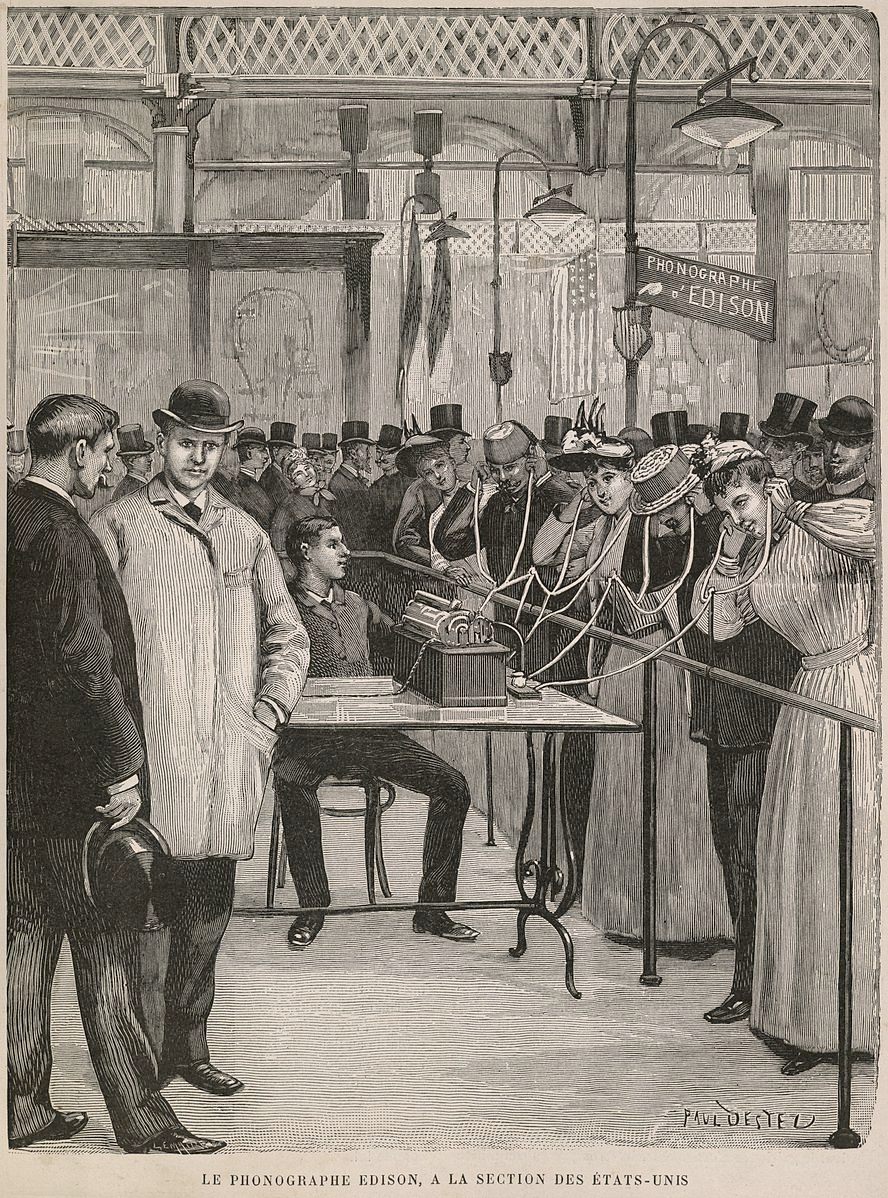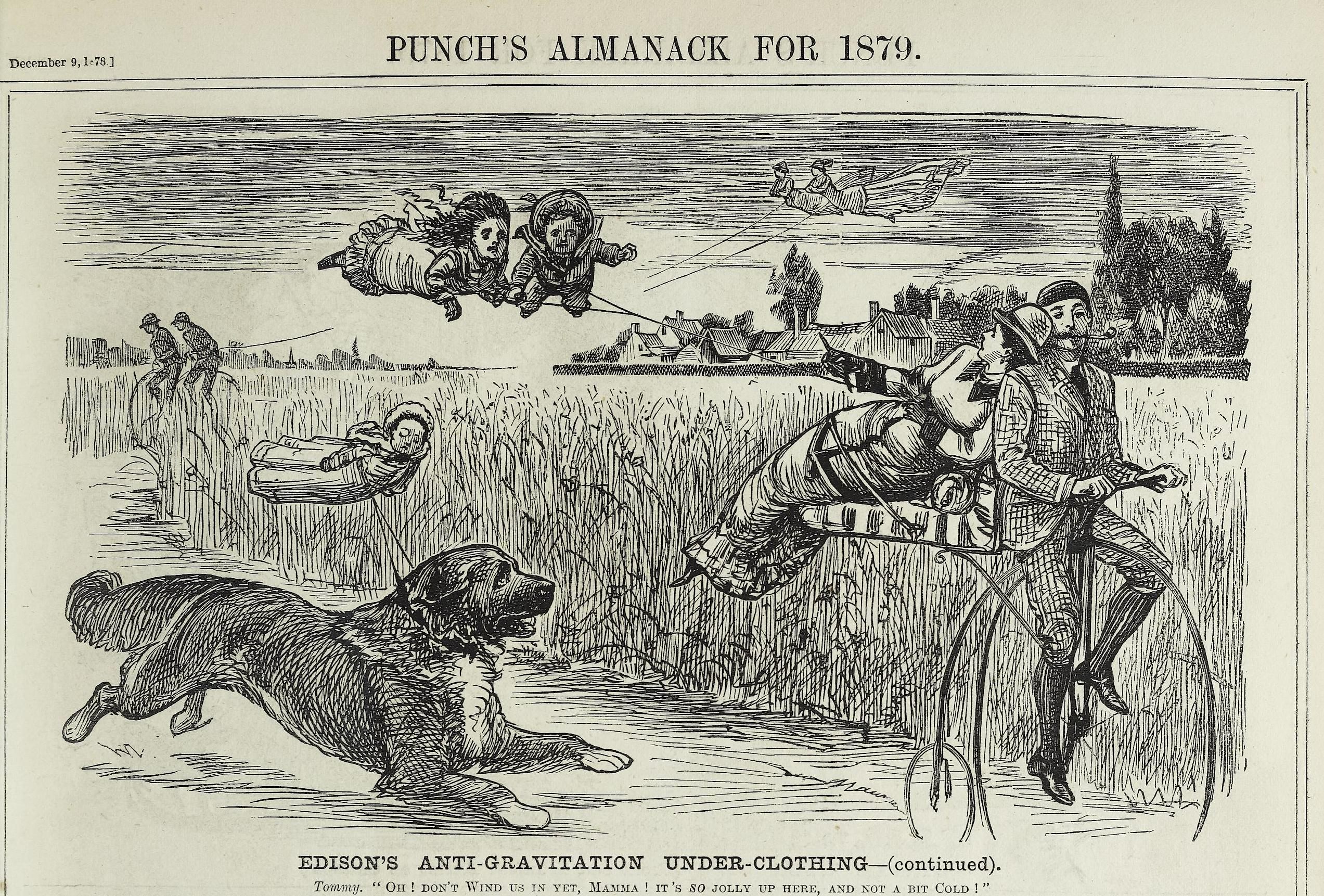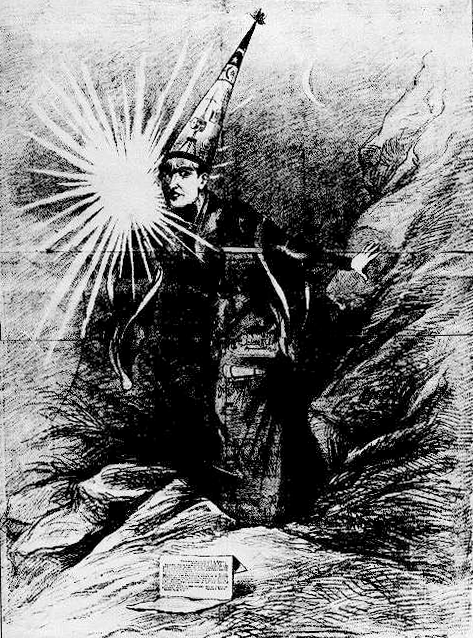Making Fun of Thomas Edison
At his peak, newspapers loved to tease the inventor. They also feared him.

On March 25, 1878, in an unsigned editorial, The New York Times spent a few column inches dragging a public figure through the mud. “Something ought to be done,” about this person, they began, “and there is a growing conviction that it had better be done with a hemp rope.” Their subject, they alleged, was a public figure “of the most deleterious character,” hell-bent on “the destruction of human society”—all words fit for a true enemy. But the Times wasn’t skewering a corrupt politician, or even a rival newsmaker. Their target was Thomas Edison, and the provoking incident was his recent invention of the phonograph.
Looking back on Edison now, it’s easy to see him as a perpetual hero. Although he had his fair share of scandals—the War of Currents, the Great Phenol Plot, the patent disputes—his modern reputation paints him as a man who single-handedly invented the 20th century with an electric-light halo around his head. But a trip back into the archives reveals that he was not always so revered. Although Edison elicited reams of fawning and excited coverage, the publications of his time also occasionally painted the great man and his inventions as creepy and dangerous—or, more often, just plain laughable.
The late 1870s marked a time of great inventiveness. In 1878 alone, the world was introduced to Alexander Graham Bell’s telephone, Eadweard Muybridge’s stop-motion photography, and Gustav Kessel’s espresso machine, to name just a few world-changing examples. In such a competitive atmosphere, novelty, more than usefulness, was the order of the day. Inventors were expected to prove how revolutionary their new gizmos were, and in turn, publications rewarded them with breathless coverage. At times, to the layperson, “progress seemed like an onslaught of newness for its own sake,” writes the media scholar Ivy Roberts in a new paper in Early Popular Visual Culture.

Edison was a big player in this era of discovery. Throughout the winter of 1877 and the spring of 1878, he traveled the world demonstrating his newest invention, the phonograph. Scientific American describes a typical show: Edison put the machine on a table and turned the crank, and the phonograph proceeded to “talk,” introducing itself and exchanging various pleasantries with gaping onlookers.
The news media responded swiftly and variously. While plenty of outlets sung the praises of this new techno-talker, others took the opportunity to poke fun. The aforementioned New York Times editorial leans equally on scaremongering and humor, switching between over-the-top mockery and genuine fear. “He has been addicted to electricity for many years,” the editorial posits, tongue firmly in cheek, before more seriously alleging that the phonograph, with its ability to record speech, “will eventually destroy all confidence between man and man.”
Cartoonists had an especially good time with the phonograph. On March 21, 1878, the front page of the illustrated newspaper The Daily Graphic featured ten separate sketches of ways phonographic technology might go wrong: greedy thieves might trick elderly millionaires into vocally amending their wills; sketchy neighbors might use opera recordings to lure women out of their homes; and wives might frighten their husbands out of sleep by cranking a record that yells “POLICE! FIRE!” over and over again.

Puck, a New York-based humor magazine, published several illustrations suggesting alternate uses for the technology. In one of them, an angry wife records herself lecturing her absent husband, so that when he finally returns from the bar, he can simply play the record and let her sleep. Another cartoon, by George Du Maurier in London’s Punch weekly, shows a demure, well-dressed woman on a street corner, silently cranking her own voice out of a phonograph. “How much better if, instead of hirsute Italian organ-grinders parading our streets, we could have fair female phonographers playing… their original voices!” the caption jokes.
Needless to say, this mockery failed to stop Edison, who continued to put out earth-shaking inventions. By the summer of 1878, he had introduced the megaphone, an instrument which, he promised, would vastly expand the scope of what the average human could hear. Although he marketed this as a wholesome device—one that could help the hearing impaired, surveyors, and opera-goers—the press once again latched onto its more scandalous and ridiculous possibilities. As Roberts details, publications from Scientific American to Scribners put out illustrated covers in which gentry are using the megaphone to spy on their faraway rural neighbors. (It didn’t help that Edison originally called the megaphone “the telephonoscope”—a name which, as the New York Sun quickly pointed out, is “incongruous and absurd,” because “a voice cannot be seen.”)

Later that July, Edison traveled west to view a rare solar eclipse, prompting a wave of send-ups from regional papers. In the July 27, 1878, issue of the Denver Tribune, a satirical writer known only as “Gnorts” devoted his column to making fun of Edison. “He is going to accomplish something in a short time more wonderful than all the rest of his grand achievements, and which will greatly astonish all mankind,” wrote Gnorts, before detailing this supposed venture: Edison planned to use the unique properties of the eclipse to lasso the sun and pull it closer to Earth, melting the ice caps, enabling the discovery of the North Pole, and ensuring that all of the world’s population would have to pay him for heat and light.
“Should the plan above not be satisfactory,” concludes Gnorts, “Mr. Edison will then divide the sun into many millions of small ones and lease them out to all who desire suns, upon the same conditions that he at present leases his telephones and phonographs.” The inventor was also a boon to advertisers: “Not even Edison, with all his inventive genius and extensive research, can find a fat person that Allen’s Anti-Fat will not reduce at a rate of from two to five pounds per week,” read one clip in the Cheyenne Daily Leader. And as Edison made his way across the country, the Mercury and the Daily Sun, two rival Wyoming papers, quickly took to comparing each other to his more ridiculous inventions as a form of ribbing.

Even after this journey, Edison didn’t rest, and neither did his critics. In September of 1878, he began talking about his plans for the electric lightbulb. Now so canonical it has become the literal symbol of inventiveness, electric light, too, was viewed with some skepticism. According to Roberts, news of its impending arrival was greeted in the London Times with a spirited debate. One October letter to the editor warned that electric lightbulbs would lend a grayish cast to ladies’ faces, making them unattractive. “Anything more ghastly and unnatural than the blue-white of the new illumination could scarcely be,” agreed another, warning that its “weird blueness” would turn people into “an assemblage of ghosts.” “The effect may be poetical if you please,” this letter concludes, “But it is the poetry of… mortal decay.”
A few months later, George Du Maurier, the cartoonist at Punch, followed his phonograph sendup with an entire Edison-themed series. In one caricature, a mother and father in England watch and speak with their vacationing children, who are far away in the Antipodes, almost as though they’re using a 19th century version of Skype. Du Maurier calls this invention “Edison’s Telephonoscope”—which, as Roberts points out, hearkens back to to the megaphone’s earlier, much-satirized name. In another three-part cartoon, gentlefolk of all ages fly through city streets, hover above country fields, and tumble around a well-appointed parlor, all thanks to “Edison’s Anti-Gravitation Underclothing.”

“From the perspective of the Victorian reader, ‘Edison’s Telephonoscope’ satirised the inventor’s misplaced confidence,” writes Roberts. “It encouraged readers to examine both the benefits and drawbacks of technological progress and supersession.” As she points out, much of the worry and satire surrounding Edison taps into anxieties about wealth, social class, and access. Who could afford the telephonoscope, if it existed? Would the megaphone truly help everyone, or would rich people use it to spy on their poorer neighbors? And is it so far-fetched to think that—if he could—Edison might privatize the sun? A slightly later cover, from a July 1879 issue of the New York Daily Graphic, continues in that vein: it shows Edison, who at that point was looking for a new way to mine iron ore, as a pointy-hatted wizard searching for precious metals in his backyard.
Today—when the pace of discovery has, if anything, accelerated—new inventions, and their inventors, inspire similar fears and feelings. Smart fridges and private moon journeys are seen as megaphone-esque playthings of the errant rich. Facebook algorithms and cell phone cameras are, like the phonograph, greeted as the likely tools of the coming surveillance state. Although the question of whether any of these perpetual fears will come to fruition—whether this constant influx of technology will bind us, rather than free us—depends on your perspective, one enduring tragedy is clear: after all these decades, we still don’t have anti-gravitation underclothing. Perhaps Elon Musk will take that on next.












Follow us on Twitter to get the latest on the world's hidden wonders.
Like us on Facebook to get the latest on the world's hidden wonders.
Follow us on Twitter Like us on Facebook